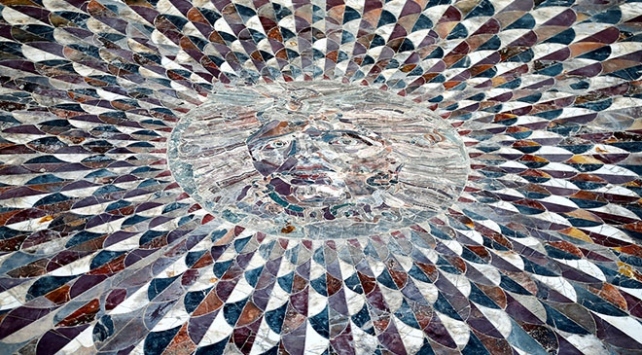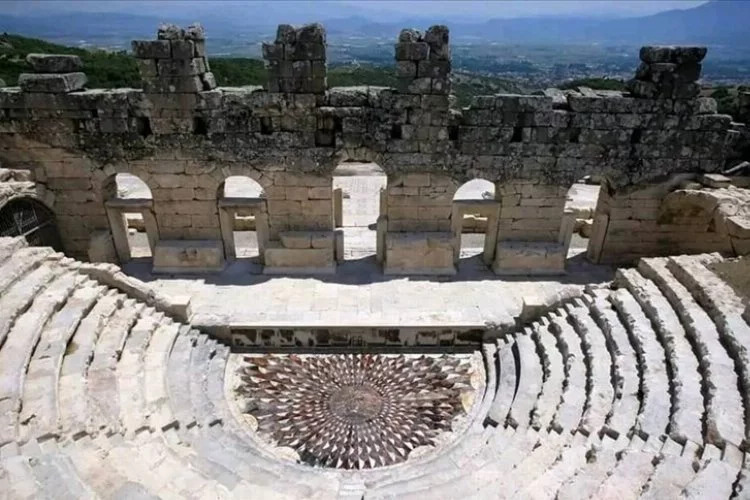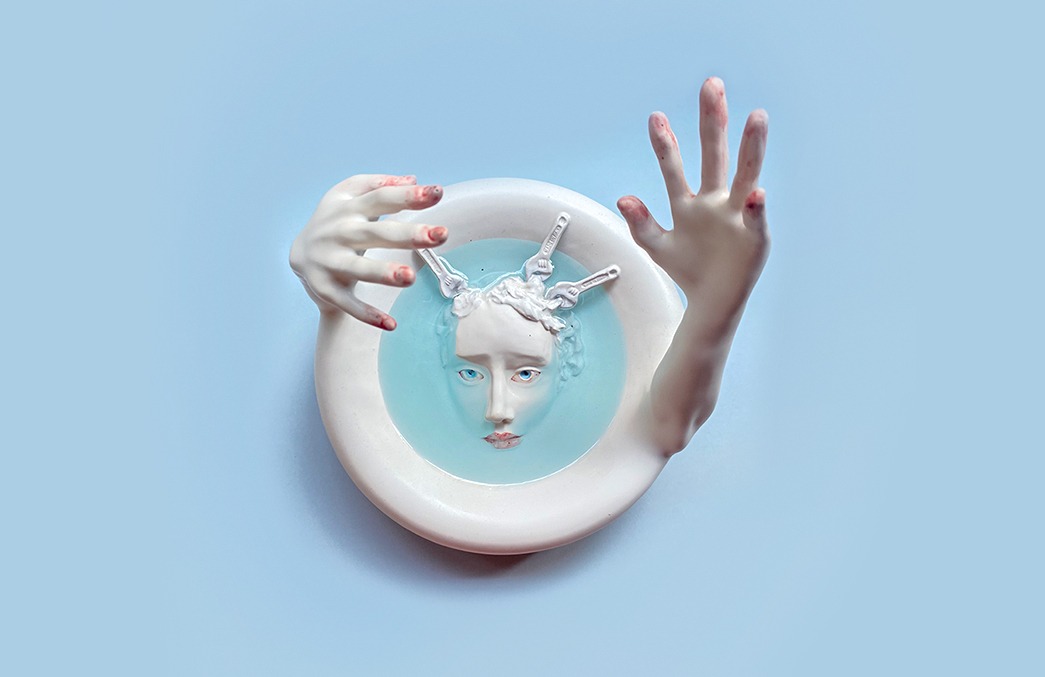The Medusa mosaic and the Odeon stoa floor mosaic in the ancient city of Kibyra, situated in the southern province of Burdur, are now accessible to visitors once again. Following a period of closure during the winter months for protection against climatic conditions, these remarkable artifacts will remain open to visitors until the end of November.
Excavations at the ancient city of Kibyra, which began in 2006, have been ongoing under the leadership of Mehmet Akif Ersoy University’s Archaeology Department Faculty Member Şükrü Özüdoğru since 2010. Located on three dominant hills separated by deep cliffs in Gölhisar district, the city boasts significant historical treasures.
Among these treasures, the Medusa mosaic, featuring a 2,000-year-old depiction of the “snake-haired, sharp-toothed female monster,” stands out as a major attraction. Unearthed during excavations in the Odeon section of the ancient city in 2009, this unique mosaic is opened to visitors during the appropriate seasons and carefully covered during winter to safeguard it from harsh weather conditions.

Kibyra, also known as the “City of Gladiators,” holds a prominent place on the UNESCO World Heritage Tentative List since 2016. Its vast, monumental structures, including a 10,000-seat stadium constructed in Roman and Byzantine architectural styles, draw significant attention. Additionally, the city features a late Roman bath, agoras, main street, a massive theater accommodating 9,000 spectators, and underground chamber tombs. Notably, it houses an orchestra section adorned with the captivating Medusa mosaic.
In Greek mythology, Medusa was depicted as a monstrous figure with a hideous human female face adorned with venomous snakes instead of hair. Legend has it that gazing upon her directly would petrify onlookers. Perseus, the hero of classical mythology, famously beheaded Medusa, employing her severed head as a powerful weapon until presenting it to the goddess Athena, who incorporated it onto her shield. In ancient times, images of Medusa’s head, known as the Gorgoneion, were featured on protective amulets to ward off evil.











